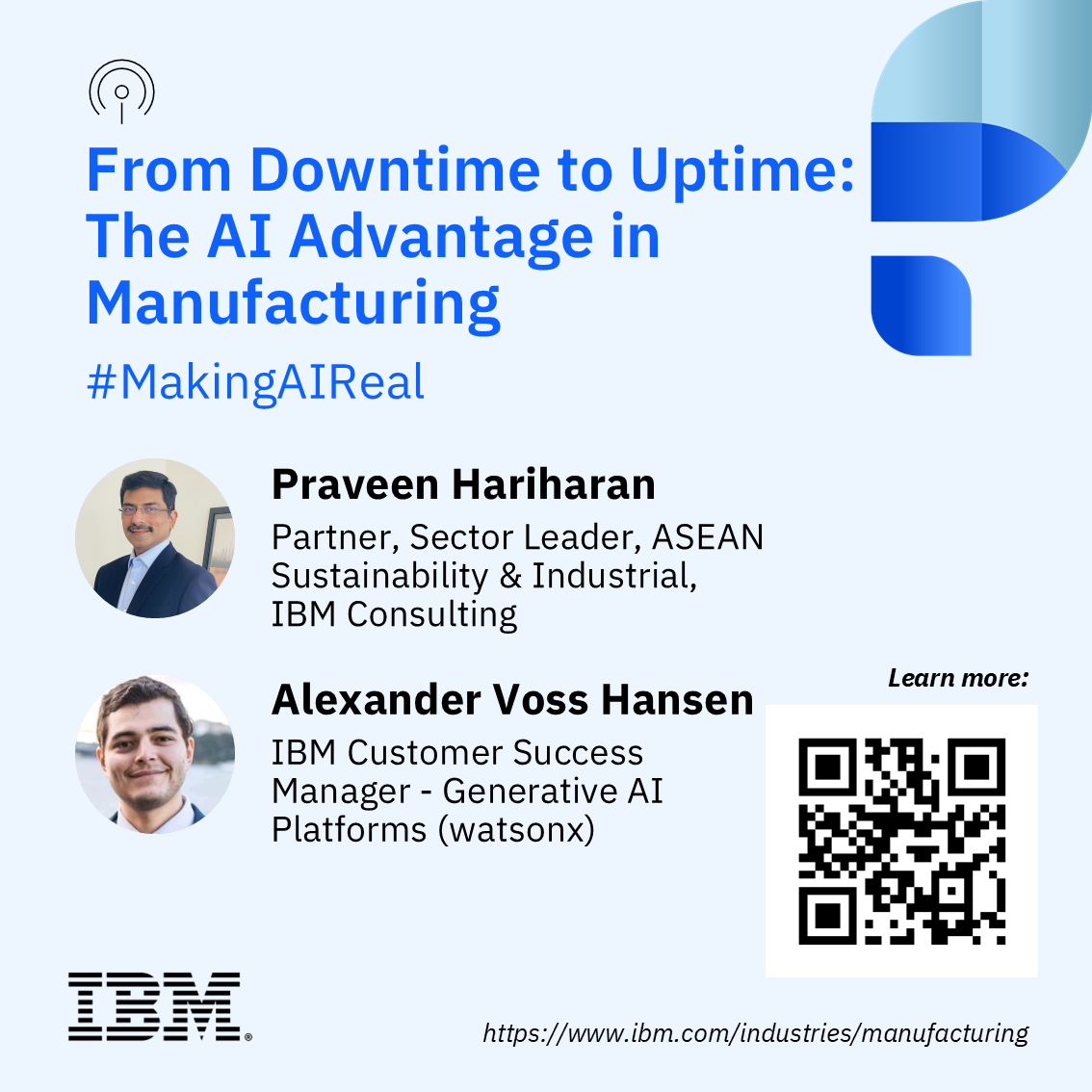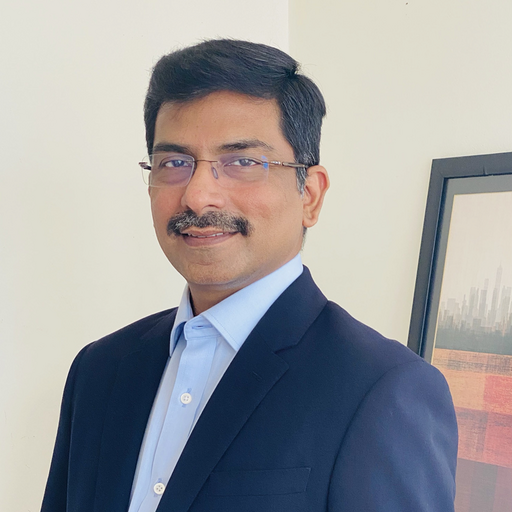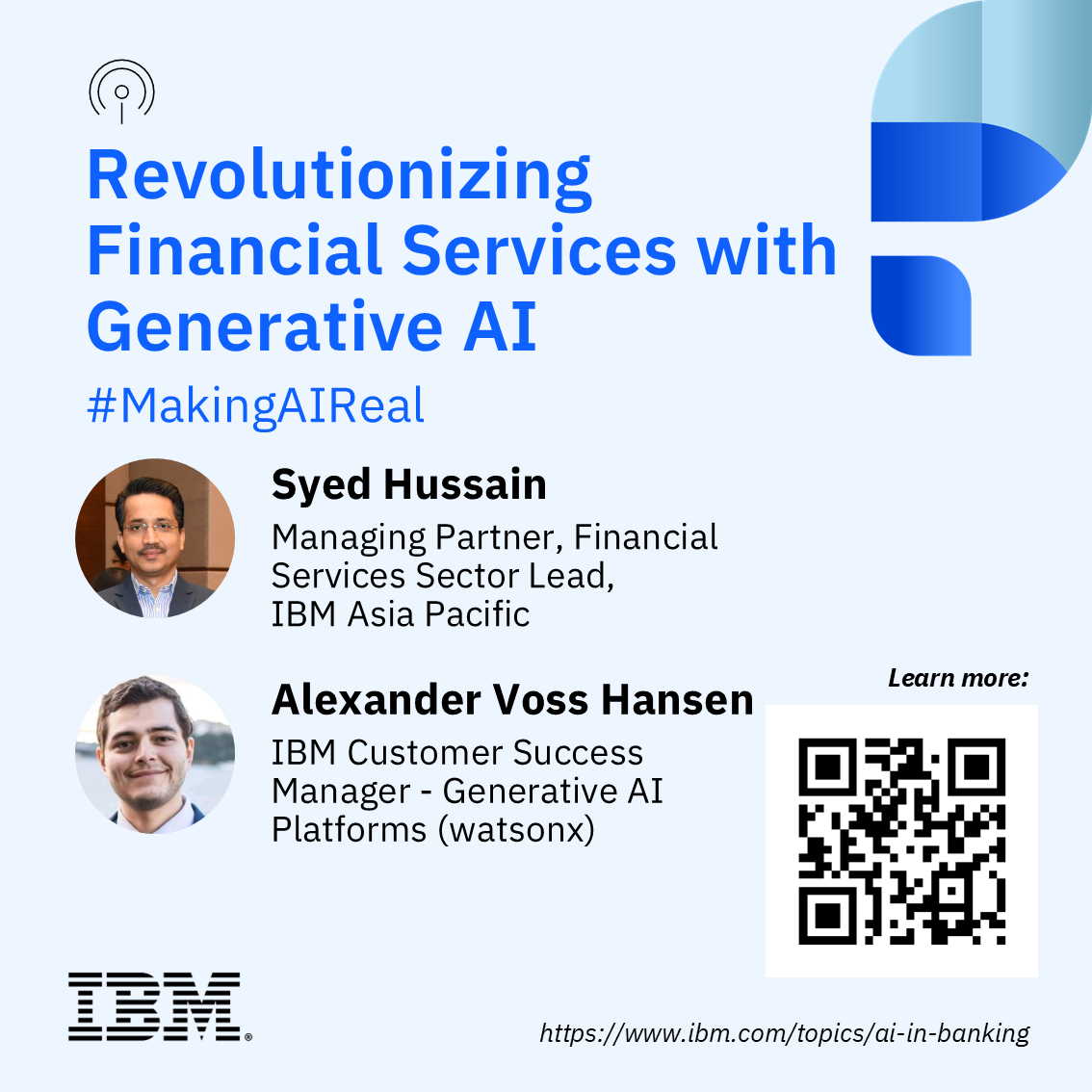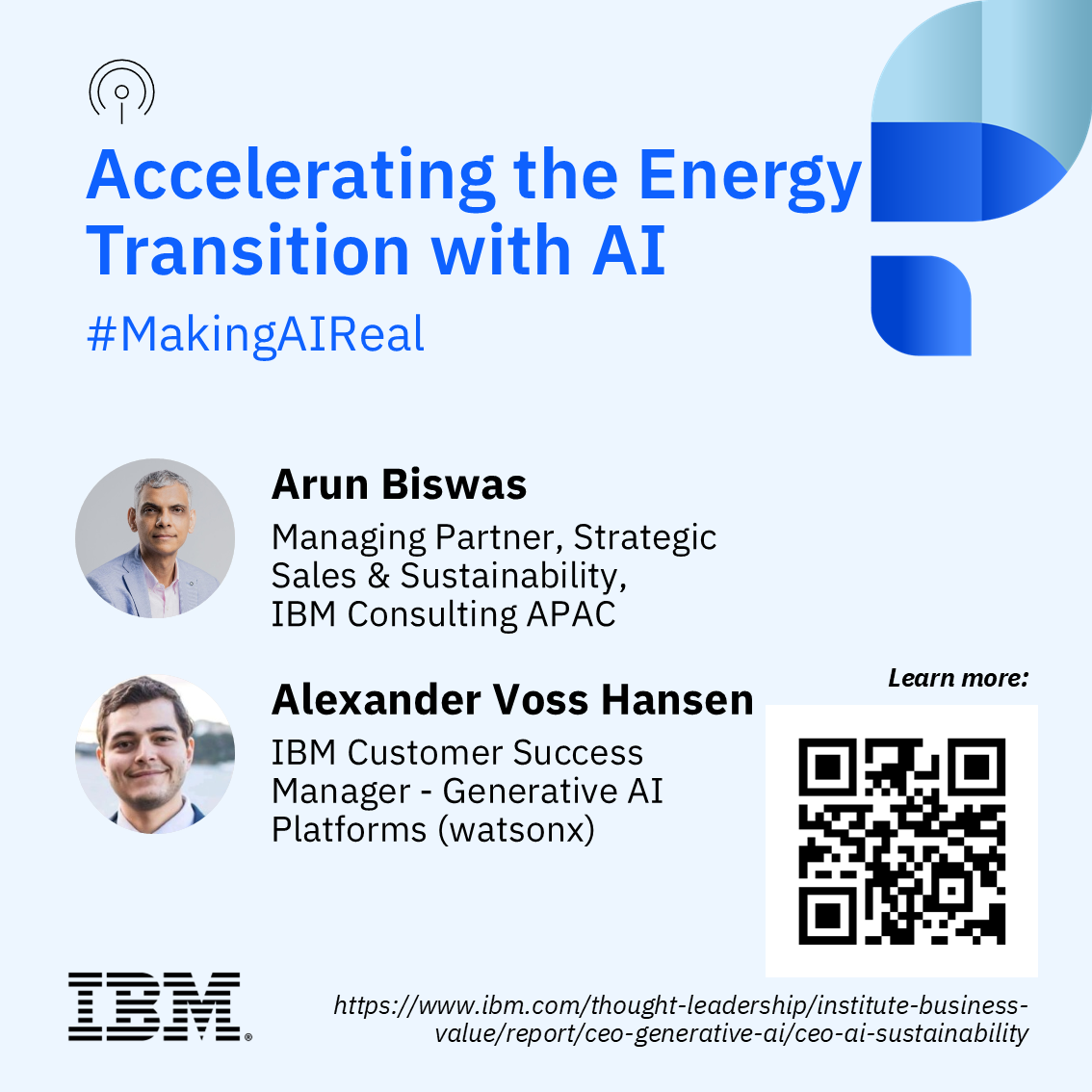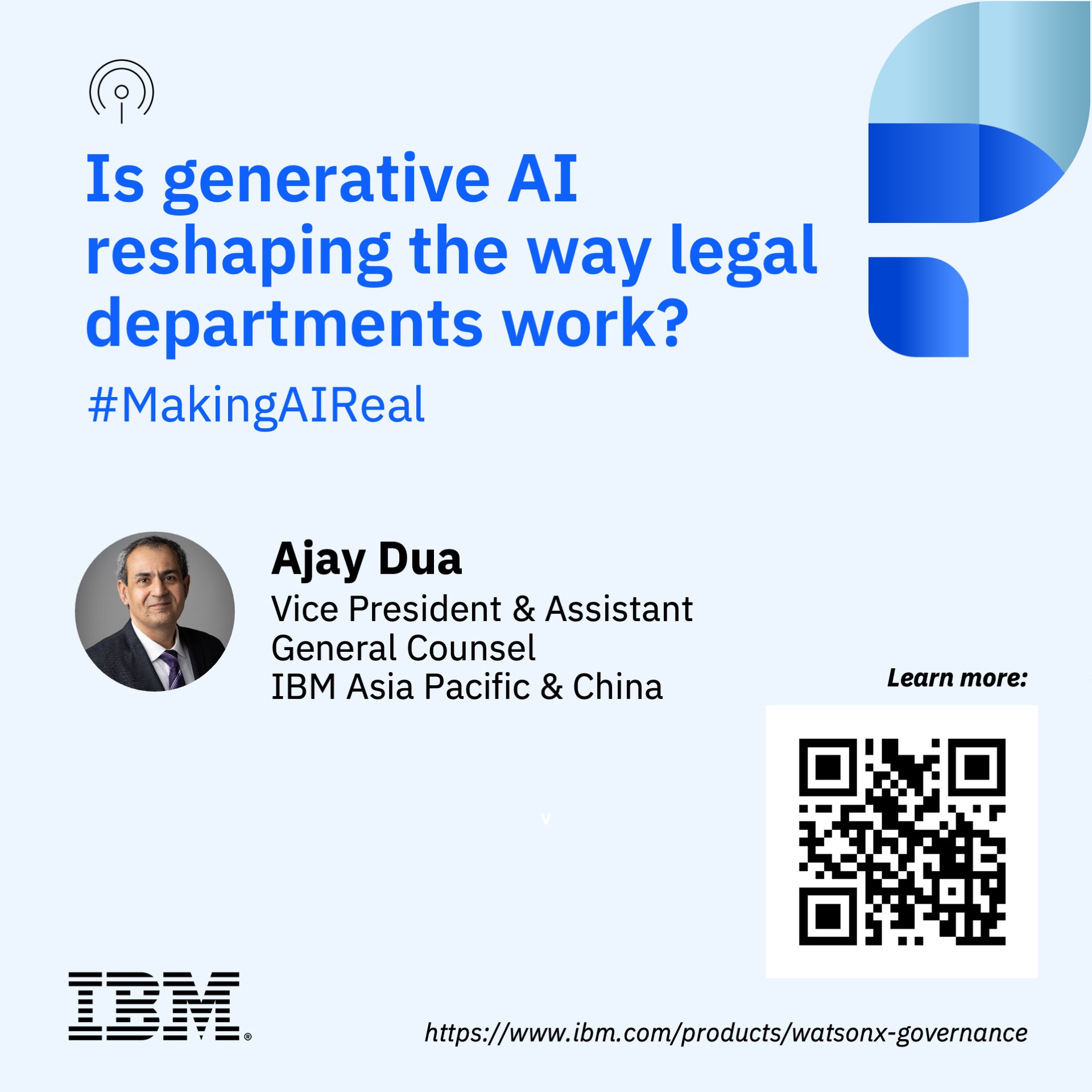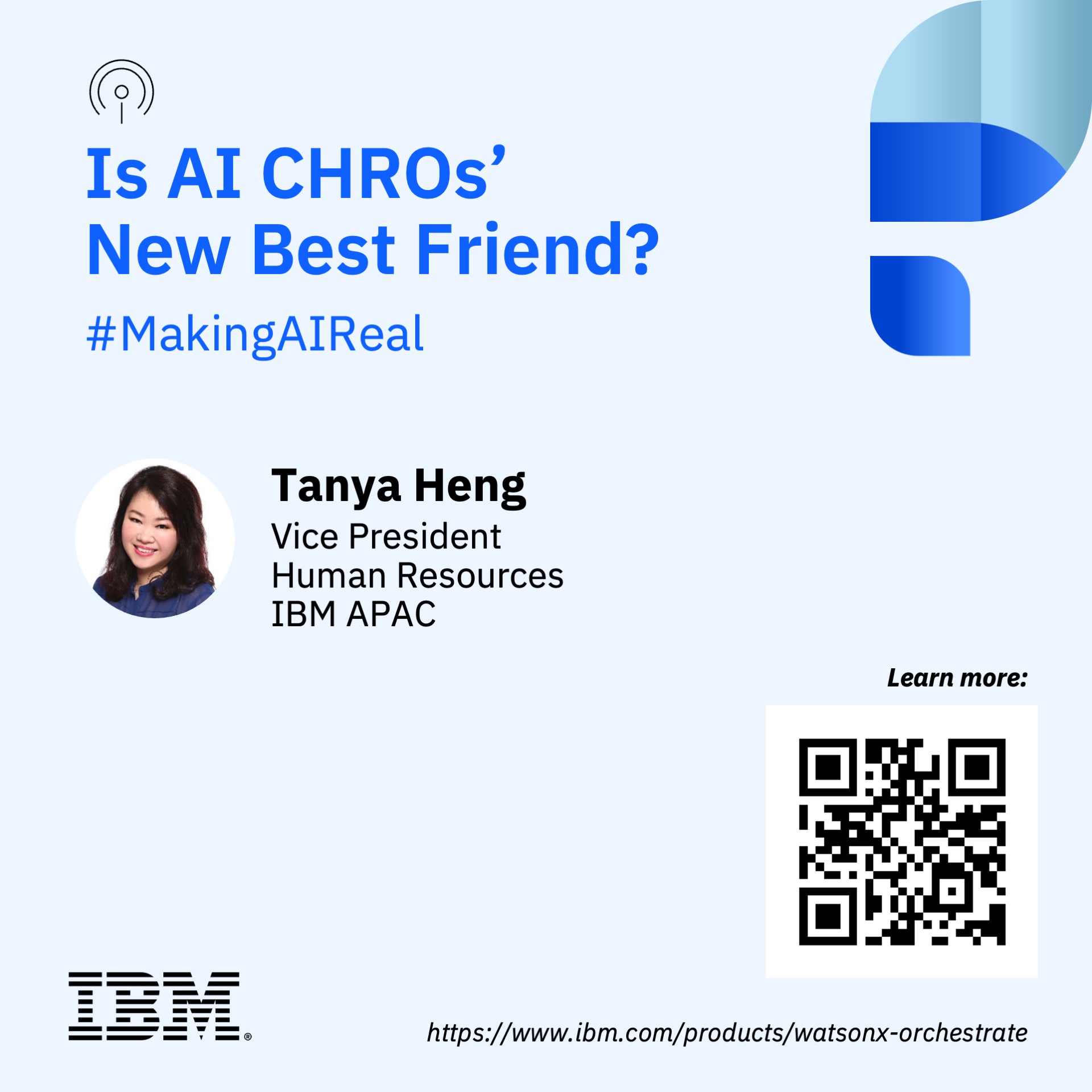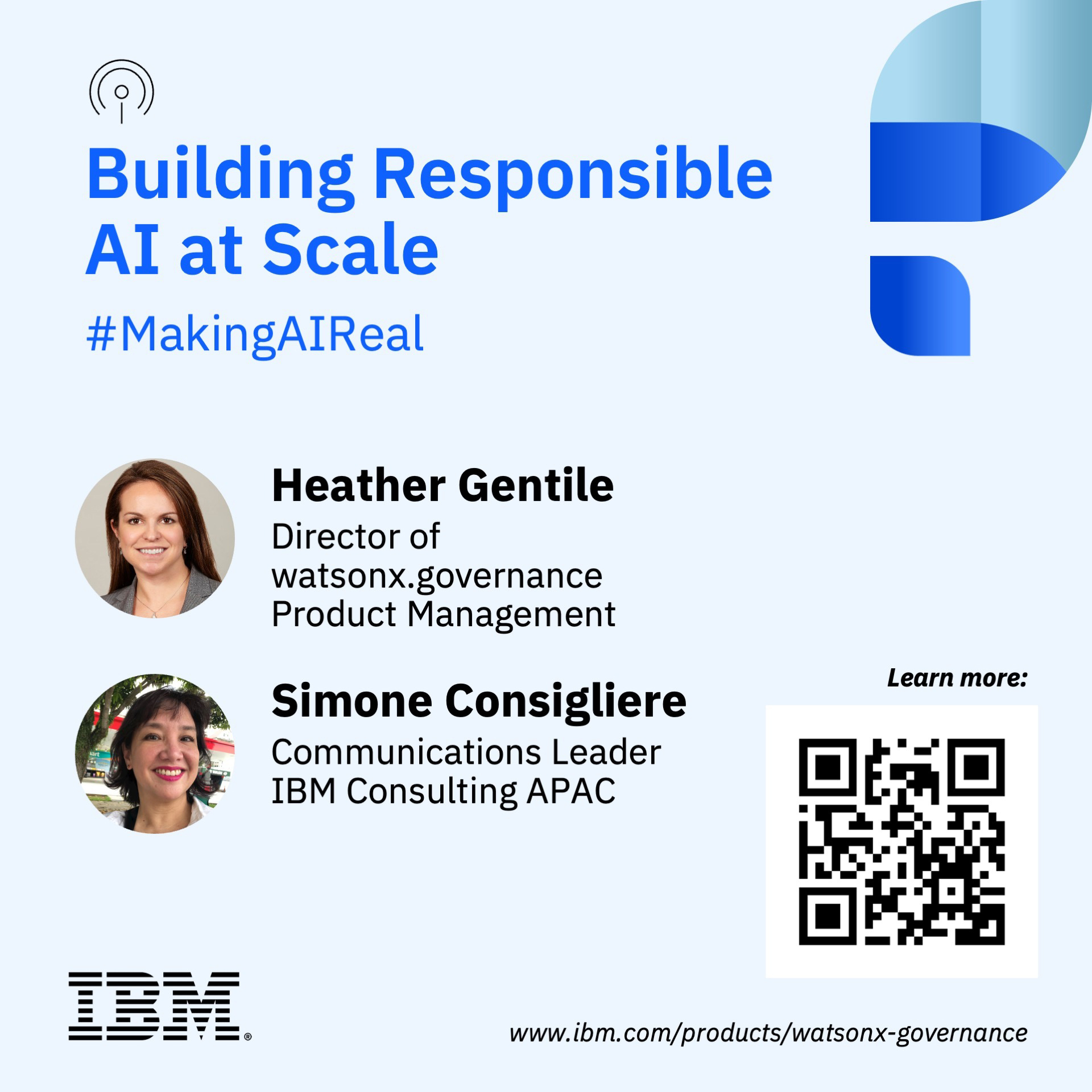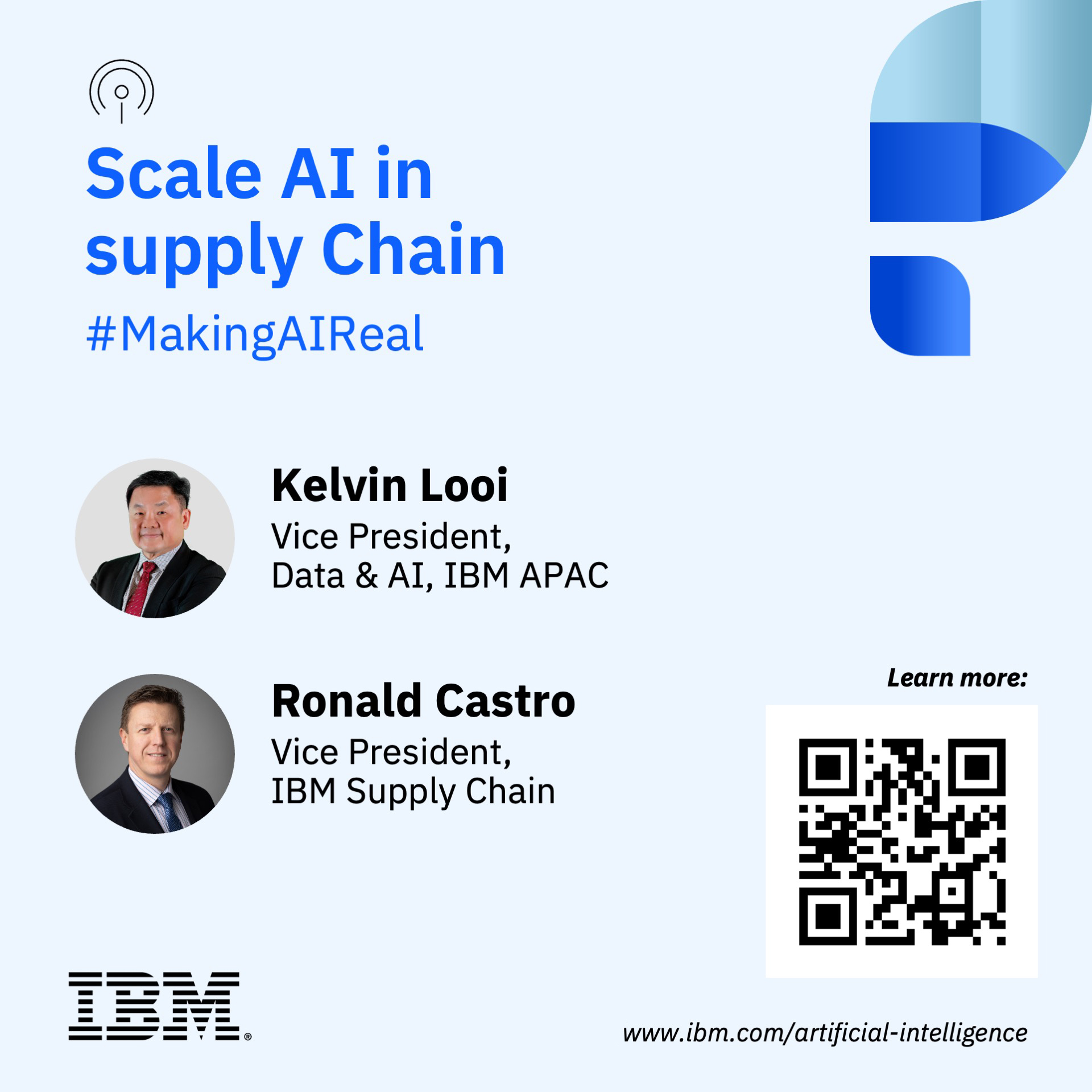From Downtime to Uptime: The AI Advantage in Manufacturing
- 0.5
- 1
- 1.25
- 1.5
- 1.75
- 2
Alexander Voss Hansen: Hello and welcome to the next installation of Making AI Real, where we can help bring to light all the amazing use cases in the world forward to you, our listeners. Although I do feel AI is very real, we'll continue to explore industry by industry to uncover some of the inner workings of AI across the different sectors of business. Today I'm joined by Praveen Hariharan, Sector Leader of ASEAN Industrial & Distribution, Consulting. Welcome.
Praveen Hariharan: Alex, nice to be here with you.
Alexander Voss Hansen: Likewise. Look, before we get started, supply chain industry and distribution, it's such an interesting sector to apply AI to. I know that this is actually rather a mature space for machine learning, but I would imagine that since its early days of adoption, we're in such a different space now. Do you have any overall comments about the things that are happening in this area?
Praveen Hariharan: Yeah, so I would say AI as such has been used for quite a while when it comes to manufacturing and distribution. But what we are seeing is the pace and the kind of applications in recent times have changed quite a bit with the advances in technology, primarily because you're able to cut the time to learn things and you're able to mature and get the results much faster. So I would say that's probably the most striking observation I have in the recent months and years, I would say.
Alexander Voss Hansen: And AI is transforming so many of the industries around us. But what do you see as the most significant impact of AI on manufacturing and supply chains?
Praveen Hariharan: I think there is impact across the value chain, especially in quality control I've seen some very interesting applications. For instance, we do have our own industry labs here in Singapore, where we are showcasing how you could use something like acoustics to actually check whether the condition of equipment is good, which means you are talking about predictive maintenance not just based on past history, work orders and so on, but by actually listening to a good condition bearing for example, as compared to something which is worn out. And using the difference in those waves these produce, you're actually able to predict whether there can be any problem in these bearings. So that's the level at which we are able to go. And in predictive maintenance, again, identifying a problem before it occurs rather than going either on a regular maintenance every six months kind of schedule or also in terms of identifying a defect even before it occurs, kind of. And for this, there is a myriad of data available, especially if you go into manufacturing, is just tons of data, but how do you correlate all this, make the right interpretation and actually enable someone to take a decision or even take the decision. We are even slowly talking about touchless plants kind of thing. So that's the level of advancement that we are seeing when it comes to manufacturing.
Alexander Voss Hansen: Wow, so there's this entire new space of assessing the health of an asset acoustically. That is so interesting. I feel like these kinds of insights are really designed to be resilient and reliable. What we're trying to achieve is that zero downtime, especially when it comes to incredibly critical services. What are some of the most impactful uses in the manufacturing industry?
Praveen Hariharan: Well, a case which looks pretty simple has a really solid impact. And we call this as the lessons learned. Because what happens in manufacturing is there are a lot of log books, there is a lot of unstructured data, and of course there is some structured data. And you are capturing the history of, let's say, a power plant, a steel plant, and specific machines for a long period of time. Now, once you're capturing all these, and if there are certain breakdowns or if there are certain outages, there is a root cause analysis and everything done. If this happens and the technology hasn't changed too much in terms of how you make steel or how you generate power, for example, now 20 years later, if you encounter a similar problem, are you actually able to apply the lessons learned from earlier and actually use that? That is the kind of application which can actually be a game changer. It is learning from your own data. And just imagine when you take this one step further and you learn from data from everybody, right? Because there is more and more cooperation, as we call it, which means there is competition which is cooperating with you if everyone's output is getting better. And I'm seeing for instance, with one of our oil and gas giants, they are willing to share the inventory of spares, for example, along with other oil and gas companies, joint ventures present in the same country so that if there is an emergency spare they require, they can actually pick it up from one of the other companies and vice versa. So this is the kind of a shared inventory system and all these are possible only with the kind of AI that you can apply both to predict your own consumption as well as to look at whether you can actually pick from him without affecting the other company. So these are kind of things that we are seeing.
Alexander Voss Hansen: That's incredible. So we're now interacting very complex sets of supply chain with one another to be more sustainable and be more predictive in how we manufacture, how much we manufacture and to reduce waste.
Praveen Hariharan: Absolutely.
Alexander Voss Hansen: Incredible use case. And it also sounds like that when we are going and doing our correlative analysis and when something goes wrong, we go as early in the supply chain as the manufacturing of each component, breaking down into what was the purity of the elements in said bolt, depending on that particular batch. A level of granularity never before seen. Very, very interesting. What unique capabilities does IBM bring to AI-powered solutions for real-time data and analytics in manufacturing and distribution?
Praveen Hariharan: Yeah. So here actually, of course, IBM has been working in this area for a very long time. But in recent times, when you talk about real-time, we have seen certain applications where we are able to bring in foundation models for time series. Now, deep learning regression models were always applied, but these actually require, let's say, about eight to ten models if you want to look at the models for process and quality. And we are able to compress this down to one to two models when it comes to establishing foundation models for time series. And the other important part is, earlier we used to use the regression models, which takes six months to implement. Now we can actually speed it up the months into weeks. We are actually able to take it somewhere like six to eight weeks. And if I just jump into the applications, which are a little more complex, I will give you one or two real examples that we are working on. So there is a cement plant that we are working on. And manufacturing cement, you have these long kilns and the various raw materials get mixed in it, so it's more of a mixing process. Now with these, we are actually doing, using these kind of time series models for two items. One is in terms of an LLM just for AI-assisted repair, which means you can actually look at what is the root cause analysis, use generative AI to create even a guide for someone to go and conduct a repair. Let's say if someone is a novice engineer who doesn't know so much about the plant, even he or she can go in there, understand the instructions and actually get this kind of repairs done. And this is in terms of assisted repair. But the same thing, we are also extending to assisted production optimization, which means you're able to take the sensor or time series models and maximize the operations for the kiln using the foundation models and take it to the next level of output. So this is one application. The other one, which I find very interesting because my first job was in Tata Steel, which is one of the really large steel plants in India. When I first went and saw a blast furnace, which is a really huge structure because in engineering when you study, you see some small diagrams on paper. When you really see it's a totally different ball game, right? And I was always told it's a complete black box, right? There are inputs that go in, which is the coke goes in. There is of course iron ore and other things. And you just get the hot metal out and you don't know what happens inside. But today we are actually working with this kind of blast furnaces where we are able to predict the process variables, which means we can actually find out what will be the heat loss, what will be the silicon content, what will be the hot metal temperature, which is actually a very important component. And we are able to recommend the coke rate that you can inject the oxygen flow blast volume and so on, so that now you have a much more scientific way to operate it. This is not just about optimizing production, but it's also about reducing GHG emissions because you're able to actually reduce, for example, the coke rate by one to 2% and better actually your environmental standards in terms of the emissions. So these are multiple parameters you're able to control using this kind of real-time data, which really was not possible in the past.
Alexander Voss Hansen: Such an easy way to orchestrate event-based architecture in a way that you have all of these different thresholds that you might meet that you want to apply for either compliance to a new law or if you want to increase the oxygenation for a specific type of steel or type of material that you're going to manufacture. And again, an incredible amount of insight that you can get, and so effective it is. Can you share some examples of how predictive maintenance powered by AI is helping the industry in reducing downtime and improving productivity?
Praveen Hariharan: Yeah, sure, Alex. Maybe I'll explain it with an example. So there is this wind turbine company that we are working with, where we have actually put in AI-powered predictive maintenance. And this analyzes the sensor data and the equipment performance. And it can actually identify potential failures even before they occur using the sensor data. But what's important is the kind of results we are able to achieve with this. So we have very quantitative results. We have been able to reduce downtime by over 20%. And not just that, we have been able to increase energy production from these turbines by about 15%. One of the critical factors that is measured in this kind of turbines is what we call the overall equipment efficiency, and even that has been able to go up by 10%. So I do have several examples, but probably this is one where with those outputs quantified, it gives a very good view of how AI can actually make an impact.
Alexander Voss Hansen: What's incredible to me in the way that you described that particular use case is that I don't see any downside. I mean, I fail to see who loses in this scenario. We're becoming more compliant, we're becoming more efficient, our equipment is lasting longer. And ultimately, that could result in cheaper manufacturing over the years in order to bring that cost down for the end user as well. I mean, this has been really insightful and really interesting. Do you have any last advice to industry peers who might be thinking about adopting AI?
Praveen Hariharan: Yeah, definitely. So one point here is I would say don't start the technology because a lot of people decide, "Okay, I need to do generative AI, and hence what should I do?" Always start with the problem. Look at what is the industry problem you're trying to solve. And first, try the usual methods. If you don't have something in the conventional methods, that's when you should actually start using AI. Use it to solve problems which are not solved by conventional methods, unless it is doing it faster or much more efficiently and giving a better output, right? So I would say start with the problem, not with the technology, although I am a technologist in IBM for the last 20 years. But yes, eventually you can solve it. Solve it out by technology.
Alexander Voss Hansen: That's great advice. Praveen, thank you so much for joining us today. Really appreciate your time.
Praveen Hariharan: Thanks, Alex. It's been a pleasure. See you soon.
DESCRIPTION
Making AI Real | Episode 7: From Downtime to Uptime: The AI Advantage in Manufacturing
Kick-off 2025 with an inspiring conversation in our latest Making AI Real episode! Praveen Hariharan, Partner & Sector Leader – ASEAN Industrial & Distribution, joins host Alexander Voss Hansen, Customer Success Manager, Specialty Architect - Generative AI Platforms (watsonx) to explore how AI is reshaping manufacturing and supply chains.
Praveen shares incredible use cases, including how AI-powered predictive maintenance has reduced downtime by 20% and boosted energy production by 15% in real-world applications. With insights into IBM’s foundation models and generative AI, this episode is a must-listen for anyone aiming to unlock the full potential of AI in industrial operations.
Learn how IBM technologies help manufacturers accelerate and scale digital transformation with AI, preparing them for Manufacturing 4.0: https://www.ibm.com/industries/manufacturing
